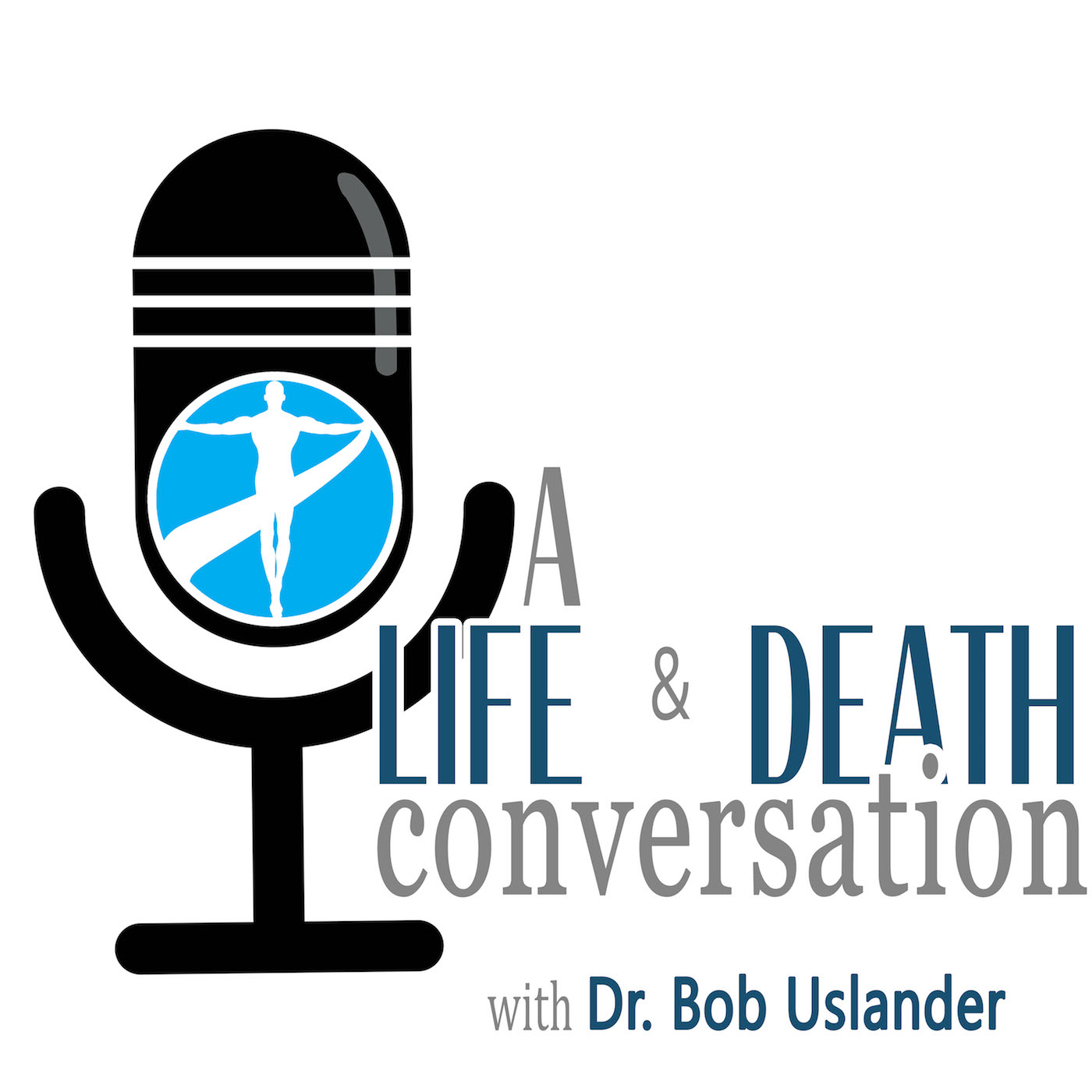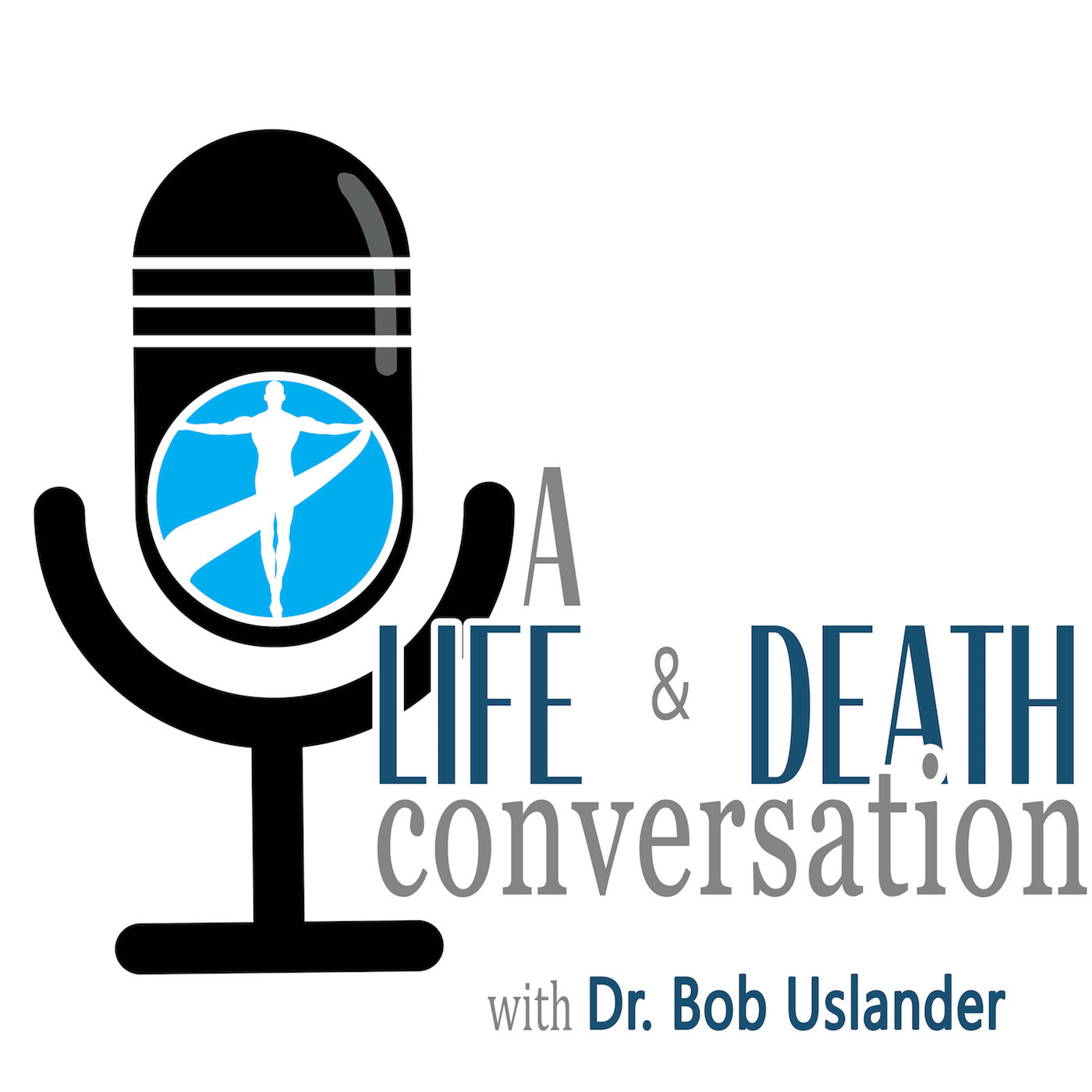What have We Learned After Two Years of Aid-in-Dying Bedside Care? – Dr. Lonny Shavelson, Ep. 31
Description
Dr. Lonny Shavelson is the founder of Bay Area End of Life Options, a medical practice in Northern California devoted to educating about medical aid in dying and supporting patients and families through this process.
Contact
Transcript
Note: A Life and Death Conversation is produced for the ear. The optimal experience will come from listening to it. We provide the transcript as a way to easily navigate to a particular section and for those who would like to follow along using the text. We strongly encourage you to listen to the audio which allows you to hear the full emotional impact of the show. A combination of speech recognition software and human transcribers generates transcripts which may contain errors. The corresponding audio should be checked before quoting in print.
Please note there is some content that is explicit in this episode.
Dr. Bob: Dr. Lonny Shavelson is the founder of Bay Area End of Life Options, a medical practice in Northern California, devoted to educating medical providers about medical aid and dying, and supporting patients and families through this process.
As you'll soon discover, Dr. Shavelson is an intelligent, articulation and passionate physician, who has a huge heart and is committed to providing excellent care to people dealing with terminal illnesses. He and I are bonded by a similar commitment. We also share a bond in that we were both emergency physicians in the past. We've seen the standard way people are cared for at the end of life, which is often not very pretty, and often not aligned with how they've lived their life.
As you'll hear in this interview, Dr. Shavelson has experienced his own brush with death, which has created far more understanding and empathy than he could've imagined. I hope you find this discussion as informative and interesting as I did.
Well, Lonny, I've been looking forward to this conversation with you for quite some time. I saw it coming up on my calendar. I was excited and woke up today really energized to have this conversation and be able to explore deeply, what it's like for you to be a physician that's in the same realm as I am, in support of medical aid and dying. Thank you for taking the time to speak to me and my listeners today.
Dr. Shavelson: You're really welcome, I'm glad to be here.
Dr. Bob: Yeah. So, just maybe give me a little bit of ... Give all of us a little bit of background, as to how you came to be the physician with Bay Area End of Life Options. What was your journey leading up to that, and what made you decide to venture into this?
Dr. Shavelson: Let's see if I can condense this a little bit. When my interest in going into medicine in general, as happens with many people who go into medicine, comes from a family history of dealing with illness. I think many people in medicine if you ask them this question, why you went in, they'll start off with the, "I want to help people," answer. And if you dig a little bit deeper, you'll find there was some illness in the family in their prior history.
So mine, very specifically, was my mother had Crohn's Disease. It's an inflammatory disease of the bowel. And because of that disease, imagine having cramps and diarrhea all of your life every day and having multiple surgeries on your bowel to try to accommodate it and bowel obstructions and all that. She was a pretty miserable person, and also in retrospect, severely depressed.
So when I was starting at the age of about 14, I became not only aware of the fact that my mother was suicidal, but she enrolled me in pacts for her death. Part of the reason that I was guided toward medical school was because of the, my mother sort of wanting to know that I would be available, not only to help her in her illness but also to help her die.
Dr. Bob: Wow.
Dr. Shavelson: So we used to have conversations around the dinner table about my mother's dying. And I thought that was the normal way people grew up. I didn't, you know ... You know, if you grow up in a certain way, you assume that that's the way it is. You don't have any other experience of any other childhood to compare it with. So I thought discussions about death and dying were what people talked about during dinner.
Dr. Bob: Not me, it wasn't happening at my dinner table, I'll tell you that much.
Dr. Shavelson: Yeah, now I realize that [inaudible 00:03:48 ] doing that. We didn't have football and baseball on the TV. We had sort of philosophical conversations about death and dying, including suicide.
Dr. Bob: Wow.
Dr. Shavelson: So my mother-
Dr. Bob: We had the Dick Van Dyke show, and the Andy Griffith Show.
Dr. Shavelson: Well, we did some of that too. It falls short to what it was.
So anyway, I grew up with death and dying discussions, including the potential for suicide as a rational way out of an illness. That was one thing that guided me, certainly into medicine, and when I got into medicine, I kind of left that behind for a long time, realizing it was pathological. It wasn't reasonable, especially in my mother's case. She was severely depressed I was her son. She had asked me to help her kill herself a number of times, and I had turned that down. But in the end, I knew that if she was very sick, and if that was what she did, and if it was more reasonable that I would then help her.
And this was way before anything like medical aid in dying or what was then called physician-assisted suicide, was even thought to be legal at any time in the future. We were back in the 1970s by the time I went to medical school.
Anyways, so that led up to ... You know, I got into my medical career as an emergency medicine doctor. Over time, I developed a dual career as a journalist and a photographer, as well as a medical doctor. So I worked about half time at each and actually moved fairly advanced in journalism with writing some books, with working with NPR as a reporter. So my journalism career took off in the same way that my medical career did, pretty much advancing over time. And to cut this to the chase, in 1996, I wanted to explore this question about what was then called physician-assisted suicide more deeply on an official level.
The reason was that Jack Kevorkian was starting his nonsense, killing patients. And I always change that to killing patients who weren't his patients. And I thought that that was not a very good model of what we could look at for helping people die in the United States. But it really struck me that there was a significant underground, where ... You know, and I know, Bob, that before anything was legalized, if somebody were close to death and were really suffering, we would turn up morphine drips, we would increase medications in such a way that we knew we were participating in aid in dying. But with a wink and a nod to the families saying, "Give him morphine once an hour," type of thing. Knowing that would bring on the death. Because the patient was having severe suffering and was nearly unconscious and just needed to be helped along.
That, and the presence of the ... I was going to say [inaudible 00:06:38 ] presence of the AIDS community. People were dying of Autoimmune deficiency disease. And they were really actively participating, but in the underground, of hoarding medication. So if you had AIDS, you could easily tap into the AIDS community and get thousands of tablets of morphine or methadone. It wasn't hard to do, because people were hoarding their medications with the intent of using it themselves. And if they end up not needing it, then they would pass it on to this sort of medical bank where medications were stored.
That was the beginning of an interest I had in the pharmacology because they had the pharmacology to really try to do this right. Whereas individuals in their homes and in darkened bedrooms were talking with their family about wanting to die and then taking all of their, let's say their hospice medications. That often did not work.
Anyways, this led to a book I wrote, called A Chosen Death, in 1996. And it was called the Dying Confront Assisted Suicide. It was about this underground ... I found families and doctors and nurses, and various people who were participating in a very significant underground. Where they were helping people, who requested aid in dying. They were doing it without charting a note; they were doing it without keeping any record of what happened. But I was able to write the story of five different families as they progressed through this. And in 1996, A Chosen Death came out. And the conclusion was very, very simple.
When you look at what I call dark bedroom suicides when you look at those dark bedroom suicides, hidden, and nobody could talk about them, there were so many things wrong. One was that often because of inexperience; the wrong people were taking the wrong medications at the wrong times for the wrong reasons. And then taking medications that didn't work and having disasters follow. It just was a terrible scene, actually. And my conclusion was, this is going to go on like ... Comparison with abortion is very strong, is that there were back-alley abortions, and we were having dark bedroom suicides. What's wrong with the back alley abortions is that they were terrible, they were not supervised, they were not done well. And they would continue no matter what. What's wrong with the dark bedroom suicides was the same.
So I made a very strong, I think argument in the book for legalization. Based on the fact that making this illegal was not working, was creating a disaster for families at the most important parts of their loved one's lives.
That







